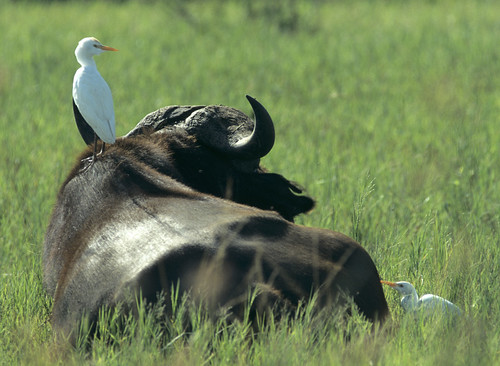The World Heritage Committee (UNESCO) has warned Tanzania not to start
uranium mining and to continue with plans to build a large dam in the Selous Game Reserve, before it has provided hard data on the ecological consequences.
Otherwise the Reserve will be declared a “World Heritage Site in Danger”. The 50,000 km2 reserve is the home of continentally important populations of elephants, lions, leopards, buffaloes, antelopes and wild dogs and has anoutstanding universal biodiversity value.
The CIC said that the Selous as Africa’s largest hunting reserve holds a great
economic potential for the country and for the rural poor living near
the protected
area. Th is potential should not be put at risk through environmentally questionable
and risky investments. The CIC also encouraged the Government to combat
poaching more energetically by providing more of the revenues from
hunting to the reserve and by involving the local people into wildlife management in accordance
with the Tanzanian Wildlife Policy.
==================
La plus importante réserve de chasse africaine en danger
Le Comité du patrimoine mondial (UNESCO) a mis en garde la Tanzanie
contre la mise en exploitation de mines d’uranium dans la Réserve de
gibier de Selous et contre le projet d’y édifi er un important
barrage; ce, préalablement à la publication par ledit Comité de
données concrètes quant aux conséquences écologiques. A défaut, la
Réserve sera inscrite sur la „Liste du patrimoine mondial en péril”.
La réserve, d’une superfi cie de 50 000 km2, abrite des populations
d’éléphants, de lions, de léopards, de buffles, d’antilopes et de
chiens sauvages qui sont importantes à l’échelle du continent
africain. Cette réserve a une valeur exceptionnelle en termes de
biodiversité universelle.
Le CIC (ou : Lors d’un bref séjour en Tanzanie, le Président Bernard
Lozé) a affi rmé que Selous, en sa qualité de réserve de chasse la
plus importante d’Afrique, offre un potentiel économique important
pour le pays et pour les communautés rurales pauvres qui vivent près
de cette zone protégée. Il ne faudrait
pas que des investissement tant risqués, que discutables d’un point de
vue écologique mettent en danger ce potentiel. Le CIC (ou : Il) a
également encouragé le Gouvernement à combattre le braconnage de
manière plus vigoureuse en distribuant davantage de revenus de la
chasse à la réserve et en associant
les populations locales à la gestion de la faune sauvage conformément
à la Politique tanzanienne de la faune sauvage [Tanzanian Wildlife Policy].
===============
Afrikas größtes Jagdreservat in Gefahr
Das Welterbekomitee der UNESCO warnte Tansania davor, mit einer
Urangewinnung zu beginnen und mit den Plänen eines großen Dammbaues im
Selous Wildtierreservat fortzufahren, um schwerwiegende ökologische
Konsequenzen zu verhindern. Bei Nichtbeachtung dieser Warnung wird das
Reservat als „Welterbestätte in Gefahr“ deklariert.
Das 50.000 km2 große Reservat ist das zu Hause von zahlreichen
kontinental bedeutsamen Tierpopulationen von Elefanten, Löwen,
Leoparden, Büffeln, Antilopen
und Wildhunden und hat einen herausragenden universalen Biodiversitätswert.
Der CIC weist darauf hin, dass der Selous als Afrikas größtes
Jagdreservat ein bedeutendes wirtschaftliches Potenzial für das Land
und die ländliche Bevölkerung, die in ärmlichen Verhältnissen nahe dem
geschützten Gebiet lebt, darstellt. Dieses Potential sollte nicht
durch fragliche und bedenkliche Investitionen in Bezug auf die Umwelt
riskiert werden. Der CIC ermutigte die Regierung auch zum intensiveren
Kampf gegen Wilderei indem mehr Einnahmen aus der Jagd an das Reservat
selbst abgegeben werden und die Einwohner gemäß der tansanischen
Wildtierpolitik in das Wildtiermanagement einbezogen werden


